Völuspá – Norse Prophecy Of The Völva, A Feared Shaman By The Vikings
Ellen Lloyd - AncientPages.com - The Völuspá, the first poem in the Codex Regius of the Poetic Edda, is one of the most outstanding literary achievements in the Norse world.
This fascinating poem reveals Norse prophecies told by a Völva, a mighty female shaman and seer in Norse mythology.
God Odin meets the Völva - Credit: Illustration by Carl Emil Doepler, 1905
Norse Prophecies Revealed
At the poem's beginning, the Völva is dead and must be restored to life. God Odin orders the Völva to rise from the grave. She tells God Odin what awaits him, the other gods, humanity, and all living beings.
The Völva describes the world's creation, the catastrophic visions of the final battle with the giants, and the inevitable destruction of the world, known as Ragnarok. She also tells what humans and gods can expect after Doomsday.
The poem begins with the Völva demanding silence from the Sons of Heimdallr.
"For silence, I pray all sacred children,
great and small, sons of Heimdall.
they will that I Valfather's deeds recount,
men's ancient saws, those that I best remember."
In Norse mythology, God Heimdallr possessed extraordinary powers and was a guardian of Bifrost (Bifröst), the rainbow bridge in Asgard, the realm of the mighty Norse gods.
This part of the poem has various scholarly interpretations. Who were the sacred children? Some suggest that the holy children who should be silent are humans, but other Norse mythology experts think the Völva addresses the other gods surrounding Odin.
God Thor's battle against Midgard Serpent. Credit: Illustration by Carl Emil Doepler, 1905
During the session with the Völva, Odin learns about the world's creation and why Yggdrasil, the Norse Tree of Life, is sacred.
She explains the existence of the mysterious Nine Worlds and reveals the identity of all beings who live in those realms.
In the Völuspá, we also find the story of the Jotuns, Norse giants, and all mythological creatures and the battle between the Aesir and Vanir gods.
Odin learns how he will be killed by the frightening Fenrir that delivers chaos and destruction in Ragnarok's final battle.
The Völva says that a new world will emerge from the destruction of the old world. The righteous and trustworthy will survive Ragnarok and live in the golden city of Gimle that stands within Vidblain, a place above Asgard, at the top of the World Tree, Yggdrasil.
At the end of the session, God Odin offers the Völva his necklace and rings as payment for telling him about the future.
The Importance Of A Völva In The Norse Society
The Völva was considered a Seiðr (sometimes anglicized as seidhr, seidh, seidr, seithr, seith, or seid), an Old Norse term for a type of sorcery that was practiced in Norse society during the Late Scandinavian Iron Age.
A Völva was respected, and Vikings and the Norse gods feared her prophecies. It has long been believed that a Völva was only a fictional figure that appeared in Norse mythology, but archaeological finds confirm the existence of these people in reality.
"Odin and the Völva" (1895) by Lorenz Frølich. Image source - Wikipedia
As previously reported on Ancient Pages, while excavating near the Fyrkat Viking fortress in Denmark, archaeologists found about 30 Viking Age graves, but one was more unusual.
Scientists found a woman dressed in fine blue and red clothes inside the tomb adorned with gold thread. Her clothes showed she was a prominent figure and most likely held royal status. It would be easy to say this was "only" a rich Viking woman, but some objects inside the grave suggest she was a Norse shaman.
We may never know the woman's identity, but her burial goods show she was not a Viking warrior but rather a Völva.
Völuspá And Christianity - Striking Similarities
Codex Regius of the Poetic Edda contains 31 poems by an unknown scribe. Its exact age is unknown, but it was probably written down toward the end of the thirteenth century, around 1280. However, some poems may have been composed at the beginning of the thirteenth century. This precious work is now preserved in Iceland.
Although Völuspá originates from pagan traditions, there is no doubt that Christian ideas also influenced its shaping.
The relations of an underground place of punishment where criminals and the wicked will be sent, the coming of a new kingdom after Ragnarok, and the existence of a paradise reflect Christian beliefs.
Scholars think the Pagan author of Völuspá had knowledge of Christianity and infused it in his poem.
The mythological poems commonly included in published versions of the Poetic Edda are:
- Voluspa (Prophecy of the Seeress)
- Havamal (The Words of the High One)
- Vafthrudnismal (The Words of Vafthrudnir)
- Grimnismal (The Lay of Grimnir)
Völuspá, the Prophecy of the Seeress (sometimes called Sibyl's Prophecy), is undoubtedly one of the essential sources for studying Norse mythology.
Written by Ellen Lloyd – AncientPages.com
Updated on January 7, 2024
Copyright © AncientPages.com All rights reserved. This material may not be published, broadcast, rewritten or redistributed in whole or part without the express written permission of AncientPages.com
More From Ancient Pages
-
 Sargon Of Akkad – Prominent Leader Who Rose Out Of Obscurity
Featured Stories | Jun 7, 2019
Sargon Of Akkad – Prominent Leader Who Rose Out Of Obscurity
Featured Stories | Jun 7, 2019 -
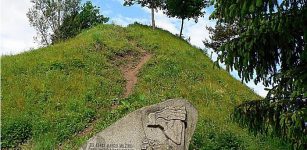 On This Day In History: 4000 Defenders Of Pilėnai Commit Mass Suicide When Attacked By Teutonic Knights – On Feb 25, 1336
News | Feb 25, 2017
On This Day In History: 4000 Defenders Of Pilėnai Commit Mass Suicide When Attacked By Teutonic Knights – On Feb 25, 1336
News | Feb 25, 2017 -
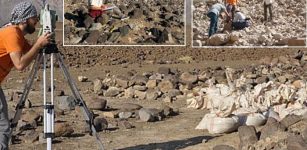 Evidence Of Copper Processing Unearthed At Archaeological Site In Oman
Archaeology | Mar 6, 2024
Evidence Of Copper Processing Unearthed At Archaeological Site In Oman
Archaeology | Mar 6, 2024 -
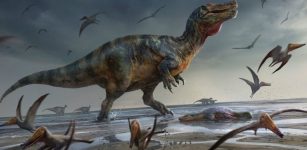 Europe’s Largest Predatory Dinosaur Unearthed On The Isle Of Wight
Archaeology | Jun 11, 2022
Europe’s Largest Predatory Dinosaur Unearthed On The Isle Of Wight
Archaeology | Jun 11, 2022 -
 Ancient Mystery Of The Man Mound And The Giant With Horns In Wisconsin
Featured Stories | Mar 1, 2021
Ancient Mystery Of The Man Mound And The Giant With Horns In Wisconsin
Featured Stories | Mar 1, 2021 -
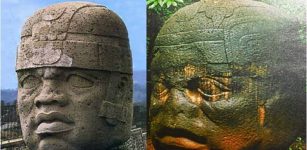 The Olmecs – Who They Were, Where They Came From Still Remains A Mystery
Civilizations | Feb 19, 2015
The Olmecs – Who They Were, Where They Came From Still Remains A Mystery
Civilizations | Feb 19, 2015 -
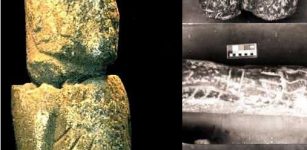 Inscription On Pokotia Monolith Reveals Sumerians Visited Peru Thousands Of Years Ago
Ancient Symbols | Sep 1, 2015
Inscription On Pokotia Monolith Reveals Sumerians Visited Peru Thousands Of Years Ago
Ancient Symbols | Sep 1, 2015 -
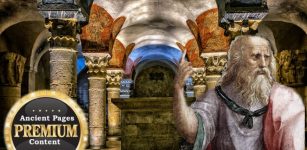 Riddle Of An Ancient Underground City No-One Thinks Exist – Have We Misunderstood Plato? Part 1
Ancient Mysteries | Sep 16, 2019
Riddle Of An Ancient Underground City No-One Thinks Exist – Have We Misunderstood Plato? Part 1
Ancient Mysteries | Sep 16, 2019 -
 Odd Encounter With A Mysterious Cave-Dwelling Creature Who Issued A Warning Described In A Norse Saga
Featured Stories | Feb 27, 2025
Odd Encounter With A Mysterious Cave-Dwelling Creature Who Issued A Warning Described In A Norse Saga
Featured Stories | Feb 27, 2025 -
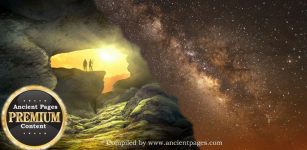 Mysterious Ancient Lost Civilization Of North America Had Interest In One Particular Constellation
Ancient Mysteries | Apr 17, 2018
Mysterious Ancient Lost Civilization Of North America Had Interest In One Particular Constellation
Ancient Mysteries | Apr 17, 2018 -
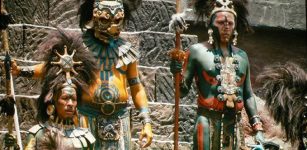 Ancient History Of Body Modification In Mesoamerica Practiced By The Aztecs, Maya And Olmecs
Ancient Traditions And Customs | Jul 12, 2017
Ancient History Of Body Modification In Mesoamerica Practiced By The Aztecs, Maya And Olmecs
Ancient Traditions And Customs | Jul 12, 2017 -
 2,500-Year-Old Mummy Workshop Discovered At Saqqara Necropolis, South Of Cairo, Egypt
Archaeology | Jul 18, 2018
2,500-Year-Old Mummy Workshop Discovered At Saqqara Necropolis, South Of Cairo, Egypt
Archaeology | Jul 18, 2018 -
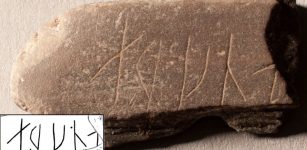 Puzzling Runic Inscription Dated To 1050-1500 AD Unearthed In Oslo, Norway
Archaeology | Dec 13, 2017
Puzzling Runic Inscription Dated To 1050-1500 AD Unearthed In Oslo, Norway
Archaeology | Dec 13, 2017 -
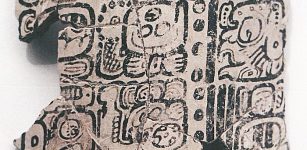 Painted Komkom Vase With Longest Hieroglyphic Text Unearthed In Belize
Archaeology | Apr 24, 2019
Painted Komkom Vase With Longest Hieroglyphic Text Unearthed In Belize
Archaeology | Apr 24, 2019 -
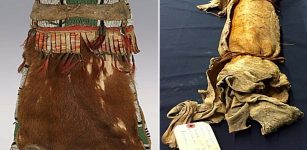 Sacred Medicine Bundle With Relics Of The First Ancestors Or Given By The Gods
Ancient Traditions And Customs | Sep 15, 2016
Sacred Medicine Bundle With Relics Of The First Ancestors Or Given By The Gods
Ancient Traditions And Customs | Sep 15, 2016 -
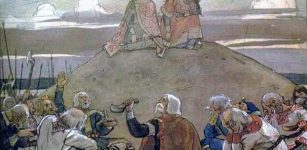 Guardians Of The Mounds – Battle To Save Scythian Burial Mounds From Destruction Continues
Archaeology | May 11, 2021
Guardians Of The Mounds – Battle To Save Scythian Burial Mounds From Destruction Continues
Archaeology | May 11, 2021 -
 Gengen Wer – Goose God Who Guarded The Celestial Egg Containing The Life Force In Egyptian Beliefs
Featured Stories | Apr 22, 2021
Gengen Wer – Goose God Who Guarded The Celestial Egg Containing The Life Force In Egyptian Beliefs
Featured Stories | Apr 22, 2021 -
 Giant Balor Of The Evil Eye – Terrifying Fomorian King And Grandfather Of Celtic God Lugh
Celtic Mythology | Apr 30, 2018
Giant Balor Of The Evil Eye – Terrifying Fomorian King And Grandfather Of Celtic God Lugh
Celtic Mythology | Apr 30, 2018 -
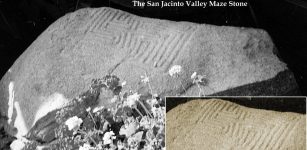 Baffling Prehistoric Maze Stones In Hemet And San Jacinta Valley, California
Ancient Symbols | Jun 24, 2016
Baffling Prehistoric Maze Stones In Hemet And San Jacinta Valley, California
Ancient Symbols | Jun 24, 2016 -
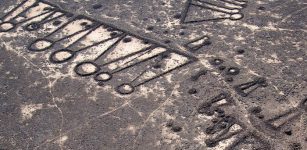 Ancient Highways Unearthed In Arabia
Archaeology | Jan 14, 2022
Ancient Highways Unearthed In Arabia
Archaeology | Jan 14, 2022



